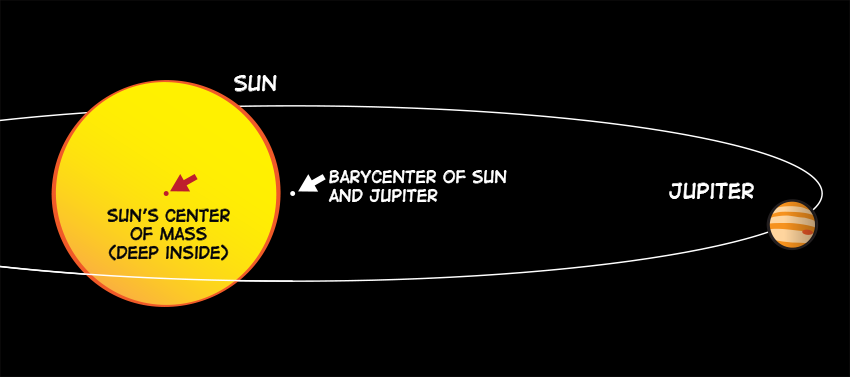The vast expanse of space is a stage where celestial bodies engage in a mesmerizing gravitational ballet. We often think of planets dutifully orbiting stars, but the truth is a bit more nuanced. Planets and stars, locked in a gravitational embrace, actually orbit a shared center of mass – a point known as the barycenter. This article delves into the concept of barycenters, exploring their role in our solar system, and how they aid in the thrilling hunt for exoplanets beyond our cosmic neighborhood.
The Center of the Balancing Act: Center of Mass
Before delving into barycenters, it's crucial to understand the concept of a center of mass. Every object, from a baseball to a majestic galaxy, possesses a center of mass. Imagine this point as the perfect balance point – the exact center of all the object's material. Think of balancing a ruler on your fingertip – the spot where it stays perfectly horizontal is its center of mass, also known as the center of gravity.
In some objects, like a sphere, the center of mass lies right in the geometric center. But for objects with uneven mass distribution, like a hammer, the center of mass shifts towards the heavier end. This principle applies in space as well.
The Birth of a Barycenter: When Two Gravitational Forces Collide
Now, imagine two celestial bodies – a star and a planet, for instance – locked in a gravitational dance. Each object exerts a gravitational pull on the other. But this pull isn't always perfectly centered. The resulting motion doesn't involve one object simply orbiting the other. Instead, both objects essentially revolve around a shared center of mass, the barycenter.
The location of this barycenter depends on the masses of the two objects. In our Sun-Earth system, the Sun holds the lion's share of the mass. Consequently, the barycenter lies very close to the Sun's center, almost as if Earth is simply orbiting the Sun.
However, the story changes when dealing with more massive objects. Jupiter, our solar system's giant, boasts 318 times Earth's mass. This significant mass difference nudges the Sun-Jupiter barycenter slightly outward, placing it just outside the Sun's surface.
A Solar System in Motion: The Wandering Barycenter
The fascinating aspect of barycenters is that they aren't stationary. Imagine our entire solar system – the Sun, planets, and other celestial bodies. Each object contributes mass to this cosmic ensemble. The combined center of mass for the entire solar system is its barycenter.
But the solar system isn't static. Planets constantly whiz around the Sun in their elliptical orbits. As these planets move, the distribution of mass within the solar system shifts ever so slightly. Consequently, the solar system's barycenter isn't fixed – it wobbles within a small region, usually close to, but sometimes even outside, the Sun's center.
The Wobbly Dance: Exoplanets with Barycenters
The concept of barycenters has become a powerful tool for astronomers on the hunt for exoplanets – planets orbiting stars beyond our solar system. Directly observing these distant worlds is incredibly challenging due to the blinding glare of their host stars.
Here's where barycenters come to the rescue. If a star harbors planets, its gravitational pull gets tugged slightly by these orbiting companions. This tugging, in turn, causes the star to wobble ever so slightly, similar to how the Sun wobbles around the solar system's barycenter.
By meticulously studying the wobble of a star, astronomers can potentially detect the presence of exoplanets. The magnitude of the wobble and the period of the wobble can provide clues about the mass and orbital characteristics of the unseen exoplanet.
This technique, known as the radial velocity method, has been instrumental in the discovery of thousands of exoplanets. By analyzing the wobble of distant stars and the resulting barycentric dance, astronomers are constantly unveiling new worlds in the vast expanse of the cosmos.
Beyond the Wobble: A Look at Other Techniques
While the barycenter method is a valuable tool, it's not the only way astronomers search for exoplanets. Other techniques include the transit method, which detects the temporary dimming of a star as a planet passes in front of it, and the microlensing method, which utilizes the gravitational lensing effect of massive objects to magnify the light of a star behind it, potentially revealing the presence of a planet.
Tags:
Cosmology

